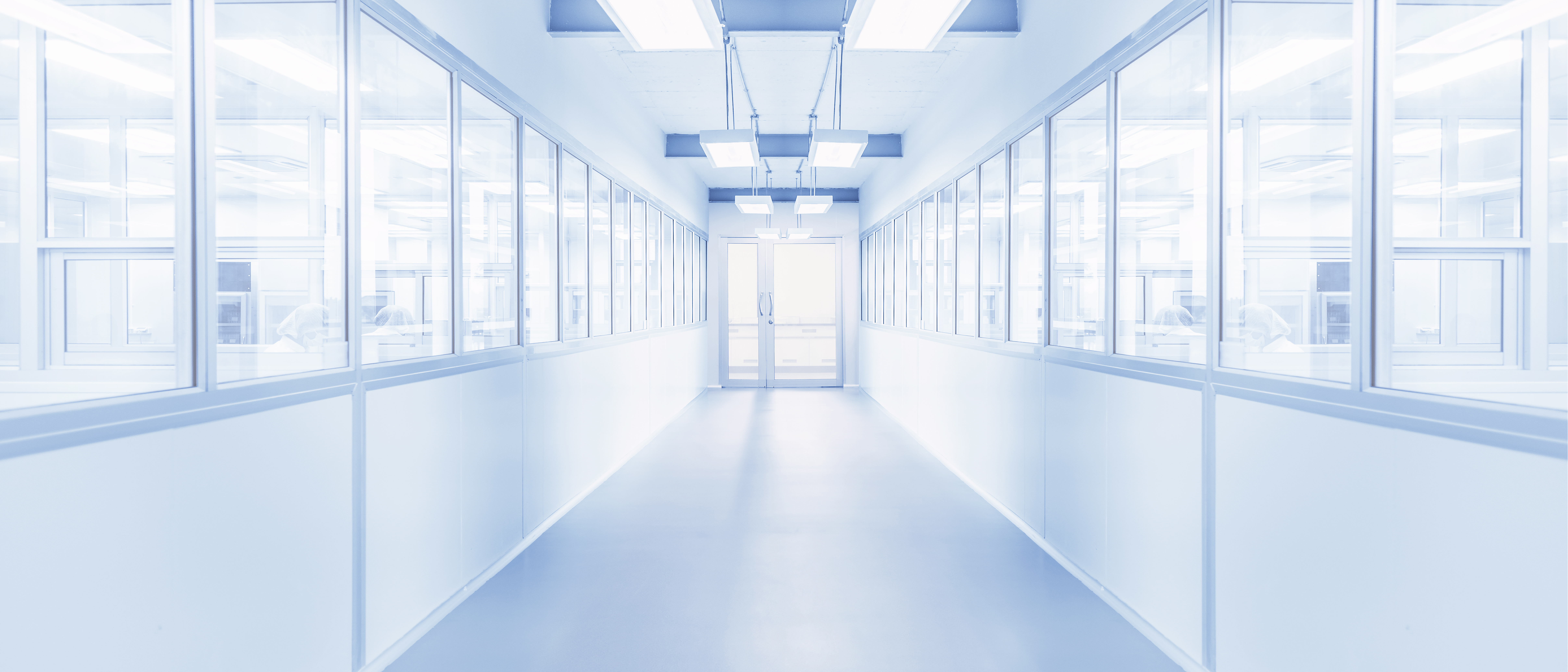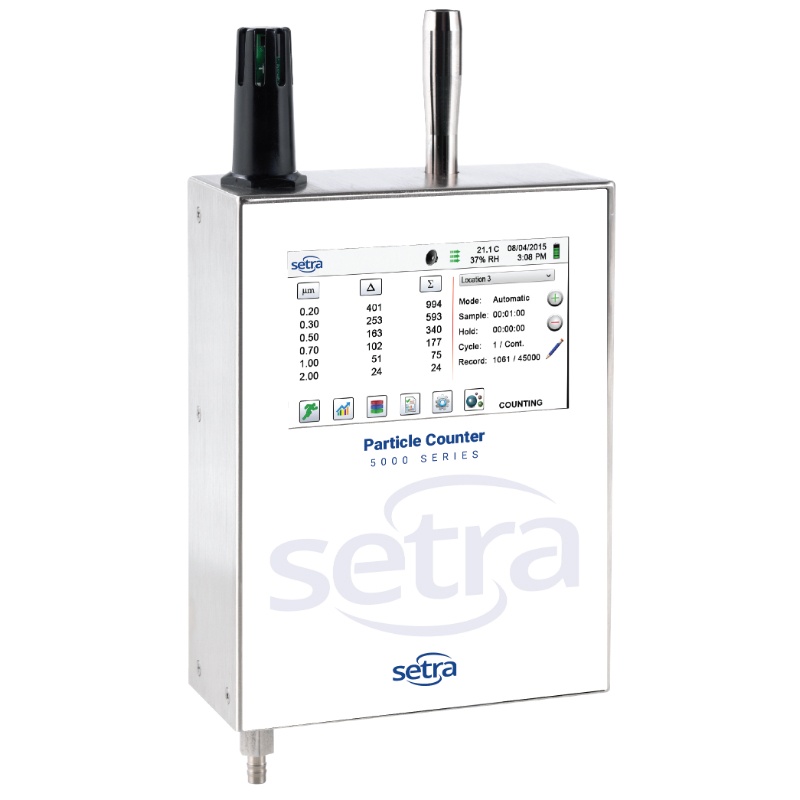Let’s face facts; manual monitoring of cleanroom particulate counts is costly, monotonous and highly error prone. Cleanroom managers are very aware that by far the greatest contamination threats come from individuals entering controlled spaces. Understandably, to reduce the number people accessing these critical environments, many companies are tasking the cleanroom operations staff already working within these spaces with the additional responsibility for manual environmental monitoring (EM).While this approach has obvious benefits, such as lower labor costs and reduced contamination risks, it also introduces significant new data integrity issues.
Setra Blog
Setra’s wide array of non-viable particle counters are used throughout critical environments to measure particle concentrations of various sizes; these counters use a long-life laser diode, light scattering, and photo detector to calculate particle size and quantities as the sampled air passes through. Particle counters are required for cleanroom certification but are also often used for continuous, sequential, or periodic monitoring of the space between certifications and to ensure that particle levels are maintained below critical thresholds during manufacturing. This post will look at Setra’s different particle counters and their differences to help you decide upon the correct unit(s) for your application.
Setra’s comprehensive range ofparticle countersand air quality monitors are the most advanced, high-performance instruments available. This industry-leading position has developed from an enduring, intense focus on innovation and original intellectual property creation.
Environmental monitoring, especially particle counting, in cleanrooms is used to show that said cleanroom operates within its set parameters before and during manufacturing processes. The safety and quality of products can be affected if too many particles enter the manufacturing space or process. However, this monitoring is commonly still a manual process in many cleanrooms instead of routine or continuous particle counting. Cleanrooms are highly regulated environments that require the utmost attention to air quality and cleanliness.
To continue operating, a critical environment must meet many safety standards to keep their space free of harmful particles. If an environment is not monitored, it can be easily contaminated by harmful particles such as mold. Air sampling is one of the most common ways to monitor for - and thus prevent - mold. Viable and non-viable air sampling can be employed in detecting mold and other harmful particles in the air. Not monitoring for those particles can lead to disaster.
USP 797 revisions were published on June 1, 2019. The clarity and readability of documentation is a concern for all facilities and significantly impacts those who compound both hazardous and non-hazardous drugs or those who administer CSPs. The revisions toUSP 797reflect new science and evidence based on updated guidance documents, best practices, and new learnings.
OEM and mechanical parts suppliers adopting ISO Standards is increasingly common throughout the US, driven by a spike in industry demand for components manufactured in ISO compliant factories. In addition to existing and increasing demand for ISO compliance in clean rooms,healthcare spaces, and laboratories, manufacturing facilities like automotive, electronics, loT, and industrial are now adapting to observe these standards. To be ISO compliant, all of these spaces need highly accurate, reliable, and NIST-traceable sensors for monitoring.
When selecting a particle counter, it is necessary to consider what building automation network it can communicate with. Examining the available options helps to ensure the particle counter will connect to your existing network.
医院感染(也称为医院获得性感染、医疗保健相关感染或HAIs)可能导致本可以避免的延长住院时间、重新入院、后续治疗,甚至死亡。空气污染通常可以通过空气传播,这就强调了需要适当的房间加压来遏制有害颗粒。手术室(ORs)是一个病人特别容易感染的地方。2.5 μ m颗粒是潜在污染物的重要先导指标,可能会使患者处于危险之中。The best opportunity to manage the risk of infections is by limiting 2.5µm particles in a space.
Subscribe to Our Blog!
Topics
- HVAC/R(180)
- Critical Environments(175)
- General Industrial(152)
- Building Automation(134)
- General Industrial OEM(93)
- Energy Management(83)
- Test and Measurement(65)
- HVAC/R OEM(58)
- Barometric(44)
- Alternative Fuels(42)
- Process/Mfg Tank Level(40)
- Medical(39)
- Water and Wastewater(39)
- OHV(38)
- Oil and Gas(35)
- Industrial Vacuum(29)
- Calibration(25)
- Semiconductor(25)
- Particle Counting(18)
- Cleanroom Monitoring(14)
- Trade Show(12)
- Scales(11)
- Room Pressure Monitoring(10)
- Power Monitoring(9)
- Power Meters(8)
- Software(8)
- Case Study(7)
- Healthcare(7)
- Environmental Monitoring(6)
- Humidity(6)
- pressure transducers(6)
- cleanroom environment(5)
- cleanroom monitoring systems(5)
- hardware and software cleanroom monitoring systems(4)
- particle counter(4)
- Compliance(3)
- Video(3)
- critical environment technologies(3)
- FAQ & Troubleshooting(2)
- Semiconductor Manufacturing(2)
- agencies that monitor pharmacies(2)
- Compound(1)
- Current Sensors and Transducers(1)
- Current Transformers(1)
- LITE room pressure monitor(1)
- Monitoring Compounding Pharmacies(1)
- Pressure(1)
- energy(1)
- hvac(1)
- ipv6 multicast(1)
- ipv6 multicast address(1)
- ipv6 multicast address range(1)
- laboratories(1)
- monitor compound pharmacy(1)
- multicast address ipv6(1)
- multicast ipv6(1)
- pressure sensor(1)
- pressure transducer companies(1)
- regulatory compliance(1)
- semi conductor(1)
- sensors and transducers(1)
- setra lite(1)
- setra lite features(1)
- setra pressure transducers(1)
- temperature monitor(1)
- temperature monitoring for pharmacies(1)
- transducers(1)
- water(1)
- what does hvac stand for(1)
- what is a transducer(1)
- what is hvac(1)











